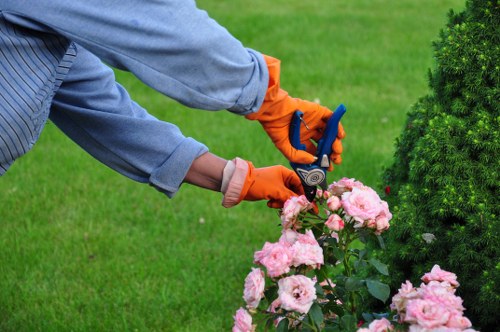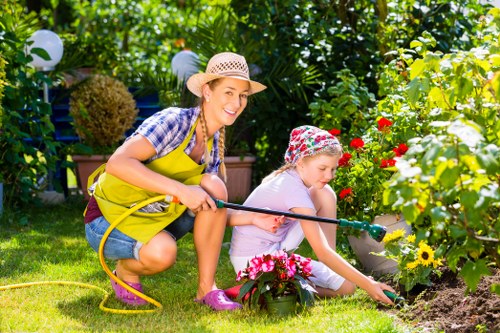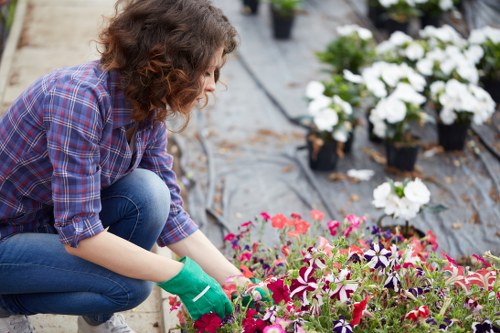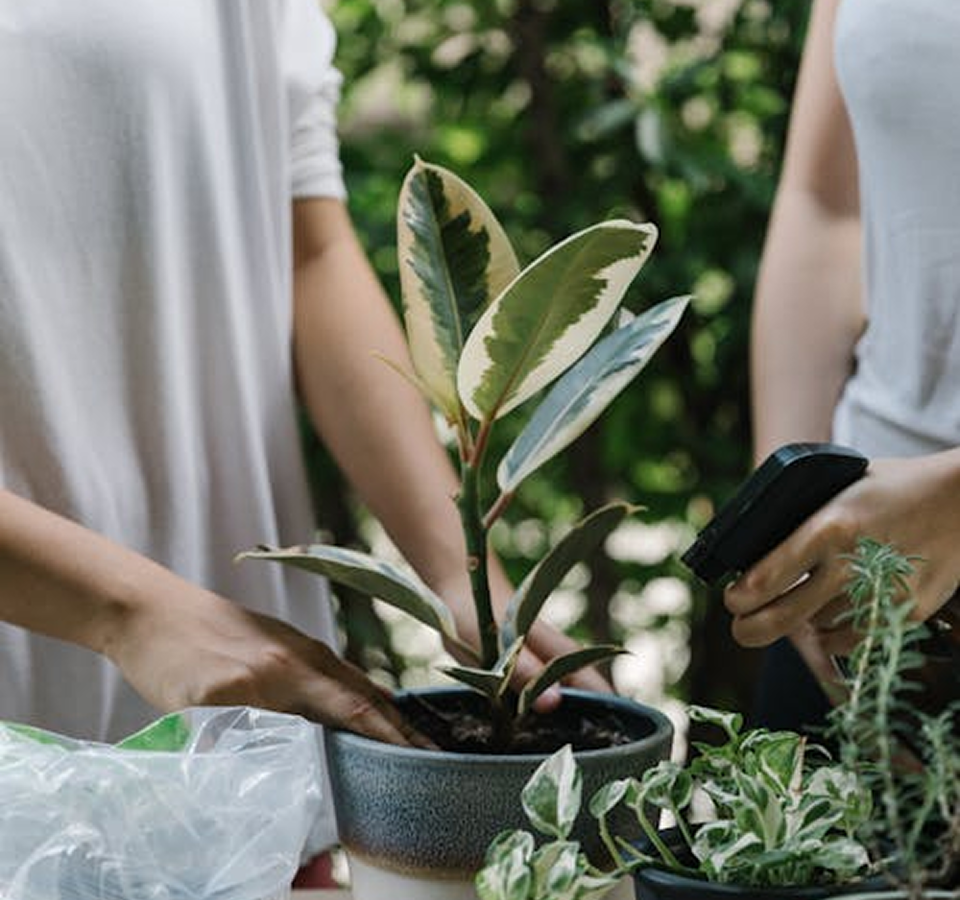Transforming Whitechapel: A Comprehensive Guide to Landscape Gardening

Introduction to Landscape Gardening in Whitechapel
Landscape gardening in Whitechapel offers residents the opportunity to enhance their outdoor spaces, blending aesthetic appeal with functional design. Whether you have a sprawling garden or a compact balcony, thoughtful landscaping can transform your environment into a tranquil haven.
Whitechapel, known for its vibrant community and rich history, provides a unique backdrop for landscape gardening. The area's diverse climate and urban setting present both challenges and opportunities for gardeners looking to create sustainable and beautiful landscapes.
In this guide, we'll explore the essentials of landscape gardening in Whitechapel, from selecting the right plants to incorporating modern design elements that complement the local architecture.

Understanding the Climate and Soil of Whitechapel
Climate Considerations
Whitechapel experiences a temperate climate with moderate rainfall throughout the year. Understanding the local weather patterns is crucial for selecting plants that thrive in these conditions.
Temperature: The average temperatures range from mild winters to warm summers, allowing for a wide variety of plant species.
Rainfall: Adequate rainfall supports lush greenery, but proper drainage is essential to prevent waterlogging.
Soil Composition
The soil in Whitechapel varies, with areas of clay, loam, and sandy textures. Conducting a soil test can help determine the nutrient levels and pH balance, guiding your gardening choices.
Amending the soil with organic matter can improve its structure and fertility, promoting healthy plant growth.
Proper soil preparation is the foundation of successful landscape gardening, ensuring that your plants receive the necessary nutrients and support.

Choosing the Right Plants for Whitechapel Gardens
Perennial Plants
Perennials are a staple in landscape gardening, offering year-round beauty with minimal maintenance. In Whitechapel, consider plants like lavender, hostas, and coneflowers that are well-suited to the local climate.
Advantages of Perennials:
- Long-lasting and resilient
- Require less frequent planting
- Provide consistent aesthetic appeal
Integrating perennials into your garden ensures a sustainable and vibrant landscape that evolves with the seasons.
Annual Flowers
For bursts of color, annual flowers like petunias, marigolds, and impatiens are ideal. These plants complete their life cycle in one growing season but offer dynamic visual interest.
Tip: Combine annuals with perennials to maintain continuous color and texture throughout the year.
Strategic placement of annuals can highlight focal points and add layers to your garden design.

Design Elements in Landscape Gardening
Hardscaping Features
Hardscaping elements like pathways, patios, and retaining walls provide structure and functionality to your garden. In Whitechapel, materials such as brick, stone, and timber blend seamlessly with the urban environment.
Pathways: Create welcoming routes through your garden, guiding visitors and enhancing accessibility.
Patios: Outdoor seating areas offer spaces for relaxation and entertainment, extending your living area into nature.
Water Features
Incorporating water elements like fountains, ponds, or waterfalls adds a sense of tranquility and movement to your landscape. These features can become central points of interest, attracting birds and beneficial insects.
Maintenance Tip: Ensure water features are properly maintained to prevent algae growth and ensure clean water circulation.
Water features not only enhance the aesthetic appeal but also contribute to the overall ecosystem of your garden.

Sustainable Gardening Practices in Whitechapel
Rainwater Harvesting
Harvesting rainwater is an eco-friendly practice that conserves water and reduces utility costs. Installing rain barrels or a rain garden can effectively capture and utilize precipitation.
Benefits:
- Reduces water waste
- Lowers dependency on municipal water supply
- Supports plant health with natural water sources
Integrating rainwater harvesting into your landscape design promotes sustainability and environmental stewardship.
Composting
Composting organic waste enriches the soil with valuable nutrients, reducing landfill contributions and fostering a healthier garden environment.
How to Start: Collect kitchen scraps, garden trimmings, and other organic materials, and allow them to decompose in a designated compost area.
Utilizing compost improves soil structure, increases fertility, and supports robust plant growth, making it a cornerstone of sustainable gardening.

Incorporating Native Plants
Advantages of Native Flora
Native plants are well-adapted to the local climate and soil conditions of Whitechapel, requiring less maintenance and water. They also support local wildlife, including pollinators and beneficial insects.
Examples: Bluebells, foxgloves, and hawkweed are native to the Whitechapel area and thrive in its environment.
Tip: Research and select native species to create a harmonious and sustainable garden ecosystem.
Creating Wildlife-Friendly Gardens
Designing gardens with native plants encourages biodiversity and provides habitats for various species. Incorporate features like birdhouses, insect hotels, and diverse plant layers to attract and sustain wildlife.
Benefits:
- Promotes ecological balance
- Enhances garden resilience
- Provides natural pest control
Wildlife-friendly gardens contribute to the overall health of the environment and add dynamic life to your landscape.

Seasonal Garden Maintenance
Spring Care
Spring is the time to prepare your garden for the growing season. Start by cleaning up debris, pruning dead branches, and fertilizing plants to encourage vigorous growth.
Tasks:
- Soil testing and amendment
- Planting new perennials and annuals
- Setting up irrigation systems
Proper spring maintenance sets the foundation for a thriving garden throughout the year.
Summer Maintenance
During the summer months, focus on watering, weeding, and monitoring for pests. Implementing mulch can help retain soil moisture and reduce weed growth.
Watering Tip: Water your garden early in the morning to minimize evaporation and ensure plants receive adequate hydration.
Consistent summer care keeps your landscape garden healthy and vibrant under the warmest months.
Conclusion
Landscape gardening in Whitechapel is a rewarding endeavor that combines creativity, sustainability, and community spirit. By understanding the local climate, selecting appropriate plants, and incorporating thoughtful design elements, you can create a garden that not only beautifies your space but also contributes to the ecological health of the area.
Ready to transform your outdoor space? Contact us today to start your landscape gardening journey in Whitechapel!
